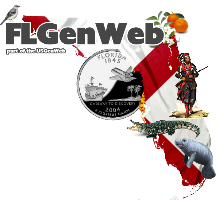


Maps | Military | Miscellaneous | Schools | Vital Records | Volunteer
 |
 |

|
| Home |
Archives |
Biographies | Books
| Cemeteries |
Census | Churches | Cities |
History | Libraries Maps | Military | Miscellaneous | Schools | Vital Records | Volunteer |
||
HISTORY More to come! |
| History Of Walton County,
Florida (this file is in .PDF format) Walton county has an area of 1,382 square miles of land surface. Its population in 1890 was 4,816, in 1900 it was 9,346 and in 1910 it was 16,460. The topography of the county varies, as does its soil. In the northern and western portions the surface is undulating, the soil is rich hammock land with heavy sand loam, well adapted to general farming. In the southern part the surface is varied and especially adapted to grazing, while in the eastern part of the county the land is rolling and rich. It is one of the best watered counties in the state, and flowing through each precinct are streams of pure, wholesome Avater, many of them having valuable curative powers. A large diversity of crops is possible in the county, chief among them being short staple cotton, corn, hay, oats, sugar cane, potatoes, velvet beans and cassava. Stock-raising is one of the best and most profitable industries, and the annual wool clip is extremely valuable. The county has a vast area of timber lands, pine and hardwood. Naval stores operations are extensive and the revenue from them is large. De Funiak Springs is the capital and principal business center. It has a population of more than two thousand. It is located three hundred feet above sea level, and here is located the State Normal School for white pupils, which has a large attendance from many parts of Florida. The educational interests of Walton county are extensive for both races and are supported enthusiastically by the citizens. The Florida Chautauqua is an institution of many years standing, and draws pupils from many states, north and south, during the winter seasons. This section offers many inducements to home seekers migrating from the northern states, because they find here conditions in many respects closely resembling those which they have left behind. The steady increase of population for the past twenty years indicates a healthy growth toward a large prosperity. Source: Chapin, George M., Florida 1513-1913, Past, Present and Future, Four Hundred Years of Wars and Peace and Industrial Development, (c) 1914, Vol. 1, p. 614-615 |